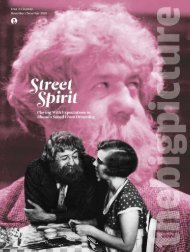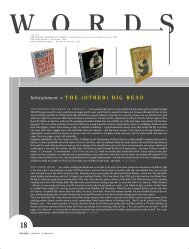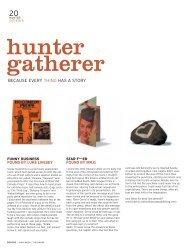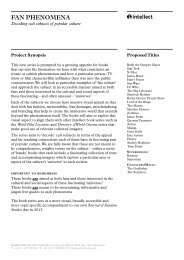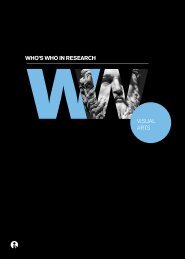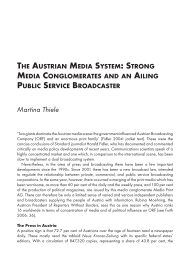Anthem - Intellect
Anthem - Intellect
Anthem - Intellect
You also want an ePaper? Increase the reach of your titles
YUMPU automatically turns print PDFs into web optimized ePapers that Google loves.
<strong>Anthem</strong><br />
Introducing the European anthem<br />
The European anthem is supposed to be that of Europe in a wider sense, including<br />
non-EU nations as well, and was first officially adopted by the Council of Europe<br />
in 1972. Its melody is the core theme of the fourth (final) movement of Ludwig van<br />
Beethoven’s Ninth Sym phony, composed in 1823. It was set to Friedrich von Schiller’s<br />
‘Ode to Joy’, expressing an idealistic vision of the human race united in brother hood:<br />
‘Alle Menschen werden Brüder’. The poem was written in 1785 but published in<br />
slightly revised form in 1803, which Beethoven compressed and modified to suit his<br />
purposes (Figure 7.1). However, though the general melodic line and the name ‘Ode<br />
to Joy’ remain, the official hymn differs from its original source by being compressed<br />
to two minutes, selecting and reshuffling Beethoven’s melodic elements, and also<br />
cancels the lyrics. (The reasons and signifying effects of this will be discussed below.)<br />
‘Without words, in the universal language of music, this anthem expresses the ideals<br />
of freedom, peace and solidarity for which Europe stands’, says the EU web site, where<br />
it can also be listened to as an audio file: ‘It is not in tended to replace the national<br />
anthems of the Member States but rather to celebrate the values they all share and<br />
their unity in diver sity’. 341<br />
Aside from the name ‘Europe’ and the myth of Europa, and not counting various<br />
ancient star circles that might have inspired the flag emblem, the anthem has the<br />
oldest pre-history, as its music goes back at least to 1823 (and the lyrics to 1785), and<br />
highly different actors have almost ever since used it to celebrate common European<br />
endeavours. In the post-World War II unification process, many activists called for a<br />
unifying anthem to supplement the common flag. Many other songs were proposed<br />
through the years, or newly composed by various enthusiasts, but Beethoven’s hymn<br />
came to be repeatedly used in this function, and seemed to have a resonance with at<br />
least how the European elites wished to define themselves.<br />
Several pleas and proposals for European songs, often in several languages, were<br />
proposed by various citizens to the Council of Europe in the aftermath of the war. 342<br />
Early examples from the autumn of 1949 were ‘Chant de la Paix’ by Mrs Jehanne-<br />
Louis Gaudet, and ‘Hymne eines geeinten Europas/Hymne à une Europe unifiée’ by<br />
Carl Kahlfuss. In 1955, the Paneuropean Union’s President Richard Coudenhave-<br />
Kalergi, who in 1950 had proposed the Council of Europe to use the movement’s<br />
sun-cross flag and also had recently pledged for a Europe Day, proposed ‘the hymn<br />
from Beethoven’s 9th Symphony’. This music had already from 1929 been used by<br />
that same movement. 343 It continued to be sporadically used at European events, for<br />
instance at the tenth anniversary of the Council of Europe in Strasbourg, 20 April<br />
1959. An increasing number of European events created a need for joint ceremonial<br />
singing. In the following years, some favoured the last movement of Georg Friedrich<br />
Händel’s Music for the Royal Fireworks (1749), while the Belgian section of he Council<br />
153



